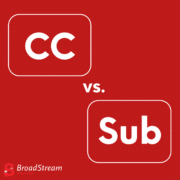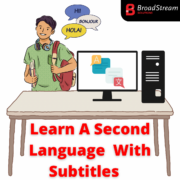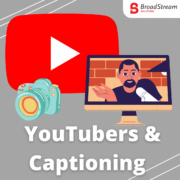Captions vs. Subtitles
What’s the difference between captions and subtitles?

Many people confuse captions and subtitles. They both appear as text on a television, computer screen or mobile phone while a video is playing, and help individuals understand the speech better. So what is the actual difference between the two?
The basic difference is captions are in the same language as the spoken word on the screen and subtitles are in a different language.
Captions take the speech and display it as text in the same language. Subtitles, on the other hand, are a translation of the speech into different languages. This means that with captions, what you read is what you also hear. With subtitles, what you read is a different language than what you hear.
Captions were originally developed to make television programs more accessible to the deaf community. Individuals with hearing impairments may not be able to fully understand the audio but can follow along with the closed captions to understand what is being spoken.
Closed captions prevent discrimination against people with disabilities and are required by law in many countries including America and all of Europe. Not only do captions benefit the deaf community, but they also make multimedia videos more engaging and accessible. With captions, videos can be played on silent in public areas or noisy rooms. Captions also help viewers to better retain information from university lectures, training videos, conference meetings, live events, and so much more.
Subtitles, on the other hand, were originally developed to make television viewing more accessible to viewers who don’t speak the same language as the audio in the program. Videos and TV programs can now be shared across the world with the help of subtitles. Although the speech remains in one language, individuals can add their foreign language, if available, using subtitles to better understand what is being said. Subtitles not only make multimedia more accessible across languages, but also help individuals who are trying to learn a new language. Statistics show that adding subtitles in a foreign language can help individuals learn a new language by watching the words and phrases pop-up on the screen. Subtitles also offer benefits for the deaf and hard-of-hearing who seek to access videos in foreign languages as well.
Both subtitles and captions make multimedia videos and television programs accessible across the world. Video content is quickly invading social media platforms and videos are becoming much more important in education and business environments.
Every video you create should have captions or subtitles to improve engagement, accessibility and retention for all viewers regardless of their hearing situation.
Check out our Captioning & Subtitling Software to learn more about what these technologies can do for you.













